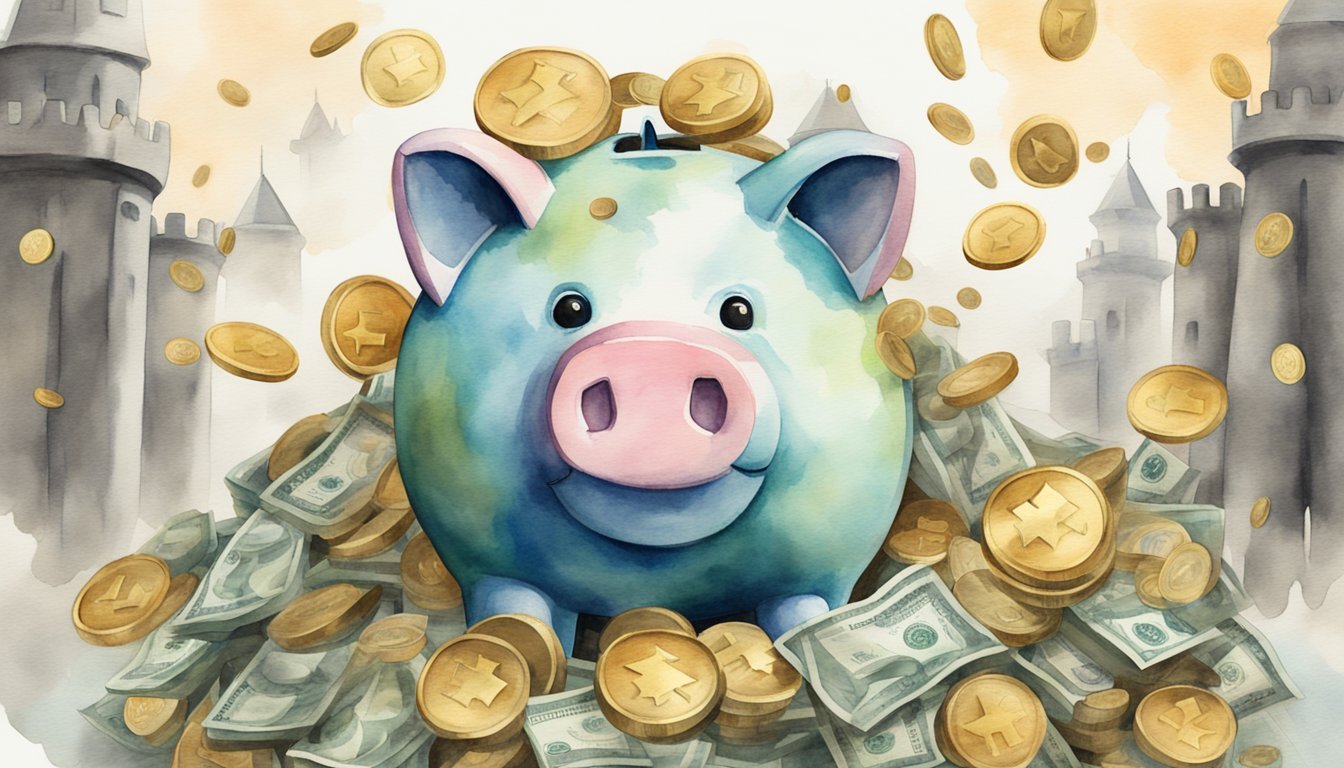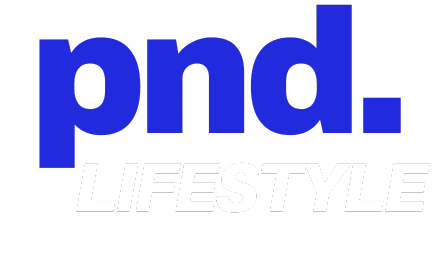7 Ways To Avoid High-Interest Debt: Simple Tips That Work

High-interest debt can be a real burden, impacting your financial health and making it tough to save for the future.
It sneaks up on you through credit cards, personal loans, and other types of borrowing that come with hefty interest rates.

Understanding how to avoid high-interest debt can save you money and reduce stress. With a few smart strategies, you can manage your finances better and keep that extra cash in your pocket instead of paying it to lenders.
1) Create a Budget

The first step to avoiding high-interest debt is to create a budget.
This keeps your spending in check and helps you see where your money goes each month.
Start by calculating your monthly income.
Include everything: salary, freelance work, side jobs, etc. Knowing how much you make each month sets the foundation for your budget.
Once you know your income, list all your monthly expenses.
This includes rent, utilities, groceries, and other bills.
Don’t forget about smaller costs like coffee or movie tickets.
Use a budgeting method like the 50/30/20 rule.
Allocate 50% of your income to needs, 30% to wants, and 20% to savings and debt repayment.
Adjust the percentages if needed to fit your lifestyle.
Another option is the 70/20/10 budget.
Here, 70% goes to spending, 20% to savings, and 10% to giving.
This can help you save while still enjoying your money.
When creating your budget, look closely at your debt payments.
Prioritize high-interest debts to avoid extra costs in the long run.
Cutting down unnecessary expenses can free up more money for these payments.
Tracking your spending is crucial.
Use budgeting apps or a simple spreadsheet to monitor your expenses.
Consistent tracking helps you stick to your budget and avoid unexpected debt.
Once you’ve set up your budget, review it regularly.
Life changes, and so should your budget.
Adjust as needed to stay on track.
2) Use Balance Transfer Cards
Balance transfer cards can help you manage high-interest debt.
These cards allow you to move your existing balances onto a new card with a lower interest rate.
This can save you money on interest payments.
When you transfer a balance, consider the fees.
Many cards charge a fee for the transfer, which is typically 3% to 5% of the amount moved.
Check if this fee will still result in savings for you.
It’s essential to pay attention to the promotional period.
Some cards offer 0% APR for a certain number of months, but after that period, the rate can go up significantly.
Make sure you can pay off most, if not all, of the transferred balance during the promotional period.
You should choose a balance transfer card wisely.
Look for a card that fits your needs and has favorable terms.
For example, some cards come with no annual fee or offer rewards points while still giving you a good deal on balance transfers.
Before applying, address any spending issues.
Transferring a balance won’t help if you’re still overspending.
Make a budget and stick to it to avoid falling back into debt.
Balance transfer cards can be a powerful tool, but they should be used with a plan.
For more details on specific cards and potential savings, check out this Consumer Reports article on balance transfer cards.
3) Consolidate Your Loans
Combining all your debts into one loan can make managing payments easier.
It’s called debt consolidation.
Instead of keeping track of multiple payments, you only have one.
You can use a personal loan for this.
These loans often have lower interest rates than credit cards.
Check out options from lenders like NerdWallet.
Another way is using a balance transfer credit card.
Some cards offer 0% interest for a set period.
This can give you time to pay off your debt without extra costs.
Just be sure to pay off the balance before the promotional period ends.
Companies like Happy Money also specialize in debt consolidation loans.
They can help you combine high-interest credit card debt into one manageable loan.
Make sure to compare different loan options.
Look at interest rates, fees, and terms.
This can help you find the best deal for your situation.
Consolidation might not be best for everyone.
It works well if you can get a lower interest rate than what you’re currently paying.
If your credit score is low, you might find it harder to get a good rate.
Check out LendEDU for more ways to consolidate.
Remember, consolidating won’t erase your debt.
It just makes it easier to manage and could save you money on interest in the long run.
4) Reduce Unnecessary Expenses
Cutting unnecessary expenses can save you money each month.
For instance, tracking your spending habits helps you see where your money goes.
Look at your bank statements and credit card bills.
This will help you spot any unnecessary expenses.
Consider trimming small costs.
For example, cut the cable and switch to streaming services.
This often saves a lot on monthly bills.
You can also call your service providers and ask for lower rates on your phone, cable, and internet bills.
Check out ideas from Debt.org for more tips.
Think about eating out less.
Cooking at home is usually cheaper and can even be fun.
Meal planning helps you avoid impulse buys at the grocery store.
Pack your lunch instead of eating out during work.
Look at your subscriptions.
Are you paying for any that you don’t use? Canceling those can free up some extra cash each month.
This includes things like gym memberships, streaming services, and magazine subscriptions.
Find cheaper alternatives for necessary items.
Shop generic brands instead of name brands.
Use coupons and buy items on sale.
Little savings add up over time.
Try reducing your energy bills.
Turn off lights when not in use.
Unplug appliances that you’re not using.
Use energy-efficient bulbs and appliances to save even more.
Lastly, make a budget and stick to it.
Setting limits helps you avoid splurging on unnecessary items.
It also shows you where you can cut back further if needed.
By making these small changes, you can reduce your expenses and save money each month.
5) Increase Income Streams

Having different income streams can help you handle financial challenges better.
If you rely on just one job, losing it could put you in a tough spot.
Adding more income sources reduces this risk.
Think about turning a hobby into a side hustle.
For example, if you love photography, you could start offering paid sessions.
This adds to your earnings and keeps you financially secure.
You could also consider freelancing.
There are many platforms where you can offer your skills, whether it’s writing, graphic design, or marketing.
Freelancing lets you work on your terms and adds steady income.
Another option is to invest in stocks or rental properties.
Investments can grow your money over time.
Although it takes some initial effort and research, it can pay off well in the long run.
If you have unused items like electronics, selling them online can bring in extra cash.
This helps you declutter and boost your finances without much effort.
Teaching or tutoring can also be a good income stream.
Whether it’s academic subjects, music, or fitness, sharing your knowledge can be profitable.
Many people are willing to pay for personalized lessons.
These extra streams can act as a financial cushion.
Even if one source dries up, others can help keep you afloat.
Diversifying your income helps you manage debts better and avoid falling into high-interest debt traps.
6) Negotiate With Creditors
Talking to your creditors might help you get better terms.
Start by contacting them and explaining your situation.
Be honest about what you can afford.
When negotiating, aim to lower your interest rates.
If your current rates are too high, ask if there’s a way to reduce them.
Sometimes, creditors may agree, especially if they believe you’ll make consistent payments.
Another option is to request a payment plan.
Offer a plan that suits your budget.
If you owe more than you can pay, try offering a lower amount.
For example, start the negotiation by suggesting you pay around 30% of what you owe and work your way from there.
Keeping a friendly tone is important.
You’re more likely to get a favorable response if you’re polite and respectful.
Some people find it easier to settle their debt themselves.
Debt settlement companies can charge high fees, so consider if it’s something you can handle on your own.
For instance, a debt settlement company may charge 15% to 25% of the settled amount.
Remember to put any agreement in writing.
This ensures both parties stick to the terms.
Once you have a written agreement, make sure to follow through with your payments to avoid any future issues.
Staying proactive and communicating openly with your creditors can make a big difference.
It shows you’re serious about managing your debt and provides them with confidence that you’ll pay what you owe.
7) Seek Professional Advice

Dealing with high-interest debt can be stressful.
At this point, seeking advice from professionals might be a good idea.
Financial advisors, credit counselors, or debt management experts can help.
A financial advisor can assist in creating a debt repayment plan.
Typically, the plan targets higher-interest debts first.
This method can help you save money on interest payments over time.
Credit counselors offer practical advice on budgeting and managing money.
They can also negotiate with lenders on your behalf to lower interest rates or monthly payments.
This extra support can make a big difference.
Debt management programs consolidate your debts into one monthly payment.
This can simplify your payments and sometimes reduce your overall interest rate.
Programs like these are usually managed by credit counseling agencies.
Talking to your lenders directly can also be beneficial.
Discussing your situation might lead to a temporary reduction in your payments or interest rates.
Lenders often appreciate when you take the initiative to solve problems.
Using these professional services can provide you with the tools and strategies to manage or reduce your debt.
It’s essential to choose the right type of advice and support for your specific needs.
Doing so can put you on the right path to financial stability.
For further details on how financial advisors can assist, check out “How Financial Advisors Can Help With Debt”.
Understanding High-Interest Debt

High-interest debt can grow quickly and affect your finances if not managed properly.
Knowing which debts have high-interest rates and where they come from is crucial.
What Constitutes High-Interest Debt?
High-interest debt is any debt with a significant interest rate, making it expensive to carry.
Credit cards are often the main culprit, with average annual percentage rates (APRs) over 22%, according to Experian.
Personal loans, payday loans, and some types of auto loans can also fall into this category.
These debts can quickly become unmanageable due to the high cost of borrowing.
To spot high-interest debt, look at the APR or interest rate.
A high-interest debt typically has an interest rate above 10%, with some types of debt like payday loans far exceeding this.
Common Sources of High-Interest Debt
Credit Cards: These are the most common source, with average interest rates above 20%, making it easy to accumulate debt if not paid off monthly.
Payday Loans: These short-term loans are notorious for extremely high interest rates, sometimes reaching triple digits, which can lead to a cycle of debt.
Personal Loans: Some unsecured personal loans have interest rates that can climb above 15%, especially for those with lower credit scores.
Auto Loans: While generally lower than credit cards, some auto loans, particularly subprime auto loans, can have high-interest rates that significantly increase the overall cost of the vehicle.
Managing how and where you borrow is key to avoiding high-interest debt.
Focus on keeping your credit score healthy and find the most affordable borrowing options when needed.
Long-Term Impact of High-Interest Debt

High-interest debt can have serious consequences over time.
It affects your finances and damages your credit score, making it harder to achieve your financial goals.
Financial Strain
Carrying high-interest debt often leads to ongoing financial strain.
Monthly payments can be overwhelming, leaving less money for essentials like rent, groceries, and utilities.
You might find yourself stuck in a cycle of paying off just the interest rather than the principal, making it feel like you’re not making any progress.
High-interest rates mean you end up paying much more than the original amount borrowed.
This can limit your ability to save for future needs, like buying a home, funding education, or planning for retirement.
Additionally, the stress from financial strain can negatively impact your mental and physical health, leading to issues like anxiety and high blood pressure.
Credit Score Damage
High-interest debt can also damage your credit score.
When a significant portion of your available credit is used up, your credit utilization rate increases.
Lenders see this as a risk, which can lower your score.
Late or missed payments further harm your score, making it tougher to get approved for future loans or credit cards.
A lower credit score means higher interest rates on future loans, exacerbating the problem.
It can also affect other areas of life, such as renting an apartment or even getting a job, as some employers check credit scores as part of their hiring process.
Managing debt responsibly is crucial to maintaining a healthy credit score.
For more detailed information, you can read about the impact of high-interest rates on loans and credit cards.
Developing a Debt Repayment Strategy

Creating a solid plan to pay off your debt is crucial.
You need to manage your money effectively and sometimes work with lenders to make it more manageable.
Budgeting Techniques
Start by listing all your monthly expenses and income.
Use tools like spreadsheets or budgeting apps to track this.
Separate your needs from your wants.
This helps in finding areas where you can cut back.
Set aside a specific amount each month dedicated to debt repayment.
Look for ways to save, like cooking at home instead of eating out.
Small changes can make a big difference.
Prioritize high-interest debts to avoid extra charges.
Consider using the debt snowball method, where you pay off smaller debts first to build momentum.
Another option is the debt avalanche method, which targets high-interest debts first.
Both can be effective depending on your situation.
Negotiating with Lenders
It’s often possible to negotiate better terms with your lenders.
Start by contacting your creditor and explaining your situation.
Be honest about your financial struggles but also show your commitment to repay the debt.
Ask for a lower interest rate or a payment plan that suits your budget.
Some lenders might agree to a settlement, where you pay a lump sum that’s less than what you owe.
Remember to get any agreements in writing.
Consider seeking help from a credit counseling agency.
They can often work with lenders on your behalf and may have access to hardship programs.
This can alleviate some of the stress and provide professional guidance.
Being proactive and communicating openly with your lenders can make repayment more manageable.
Frequently Asked Questions
Managing debt can be a challenge, but with the right strategies, you can stay on top of it.
Below are some key pieces of advice for avoiding and managing high-interest debt.
What’s a smart way to steer clear of getting buried in debt?
Create a budget.
Know how much you spend and earn each month.
This helps you avoid overspending and plan for expenses.
Stick to your budget to keep your debts under control.
Got any tricks for managing debt when you’re not making a ton of money?
Track your expenses closely.
Reduce unnecessary expenses where you can.
Look for ways to increase your income streams, like a part-time job or freelance work.
Every little bit helps!
How can you dodge high-interest traps that lead to debt?
Use balance transfer cards with lower interest rates to pay off higher-interest debt.
Consolidate your loans to get a better rate.
Stay informed about your credit card terms to avoid fees and high-interest charges.
What are some cool strategies for young folks to avoid racking up debt?
Start building good financial habits early.
Save a portion of your income regularly.
Avoid impulse purchases and use credit cards wisely.
Always pay off your balance in full if you can.
Know the score on handling debt without getting overwhelmed?
Prioritize your debts by interest rate.
Pay more than the minimum on high-interest debts first.
Use methods like the debt snowball for smaller, more manageable payments.
Stay disciplined and consistent with your payments.
What’s the real deal with managing various kinds of debt?
Understand the differences between secured and unsecured debts.
Secured debts, like mortgages, often have lower rates but involve collateral.
Unsecured debts, like credit cards, have higher rates but no collateral.
Manage each type based on its terms and your financial situation.






